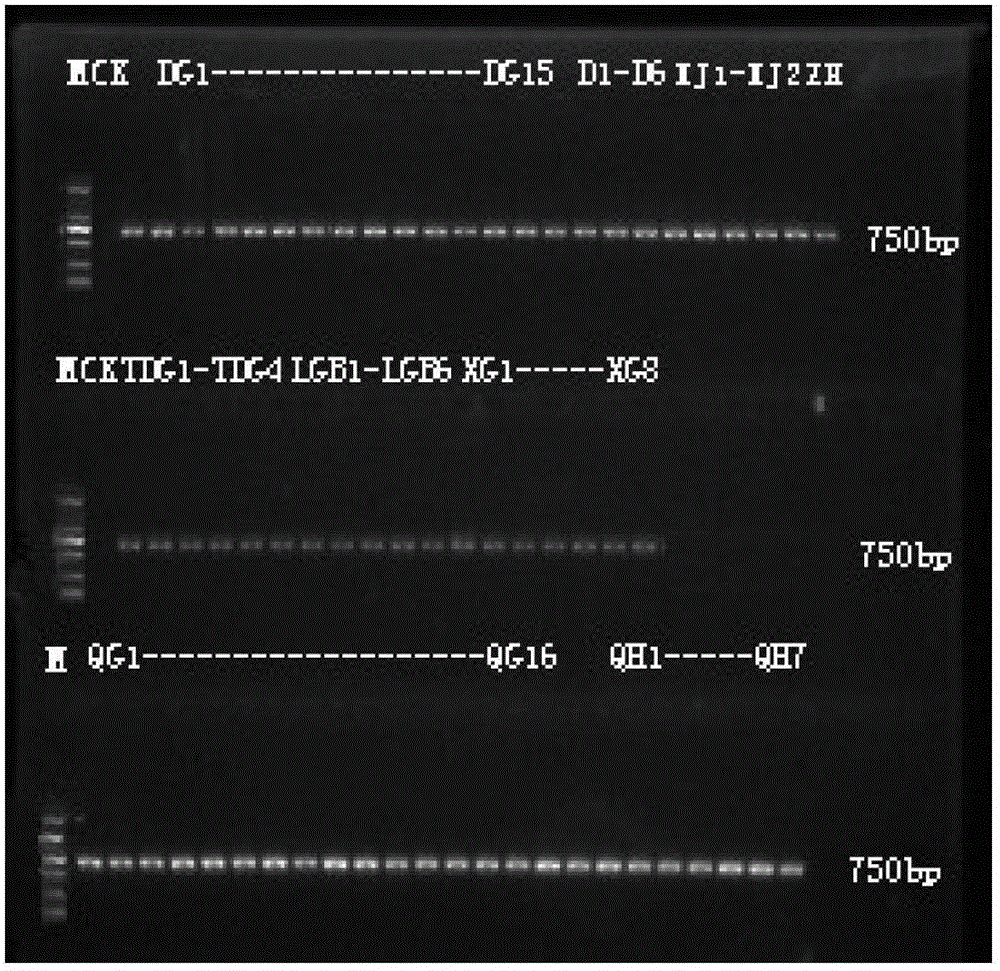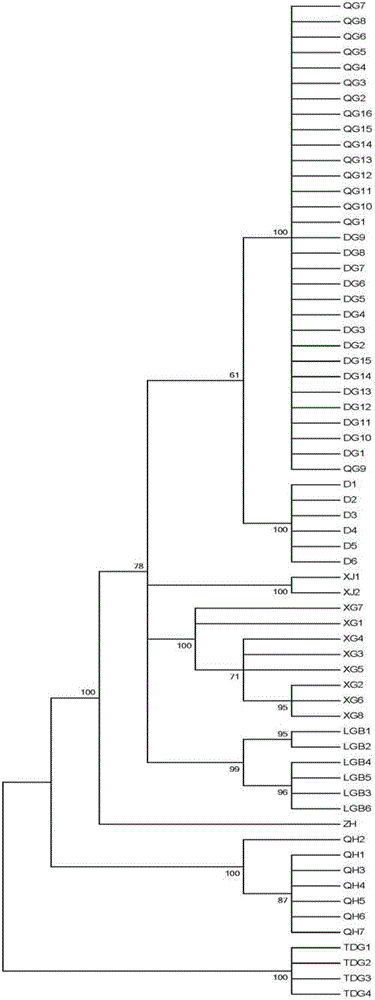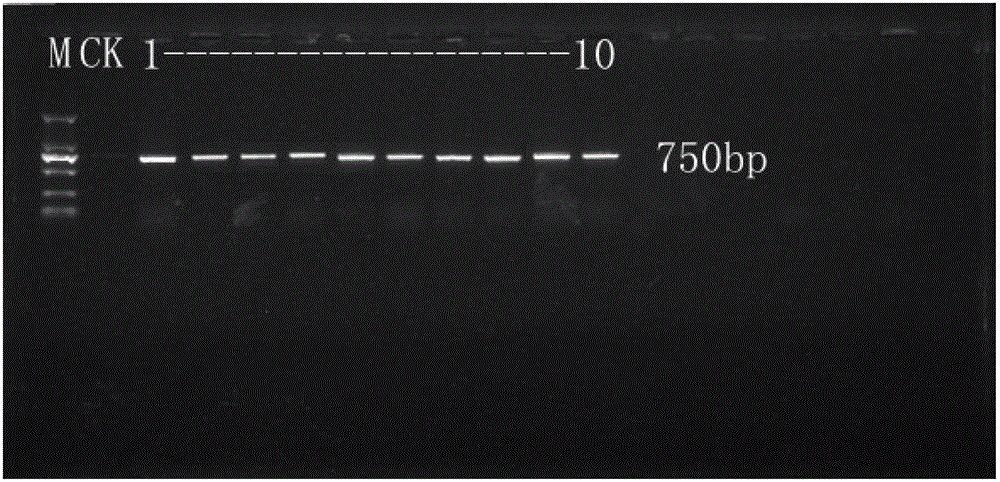Method for identifying Chinese angelica and its adulterants by utilizing ITS sequence
A technique for mixing counterfeit products and angelica, applied in the field of identification of Chinese medicinal materials source varieties, can solve problems such as difficult identification, and achieve the effects of remarkable results, strong practicability, and easy operation.
- Summary
- Abstract
- Description
- Claims
- Application Information
AI Technical Summary
Problems solved by technology
Method used
Image
Examples
Embodiment 1
[0022] Embodiment 1 Angelica sinensis and its counterfeit product GenBank data analysis
[0023] Download the ITS sequence data of Angelica sinensis and its counterfeit products from GenBank, use the bioinformatics software CodonCode Aligner and MEGA5 for comparative analysis, and establish a Neighbor Joining Tree (NJ tree), the results are as follows Figure 5 As shown, the ITS sequence can well separate Angelica sinensis and its counterfeit products;
Embodiment 2
[0024] Example 2 Using ITS sequence to identify Angelica sinensis and its counterfeit products
[0025] 1. Sample source
[0026] Angelica sinensis and its counterfeit products include Angelica sinensis, Qingui, Duhuo, Ligusticum ligusticum, Ligusticum ligusticum Xinjiang, Angelica sinensis, Peucedanum chinensis, etc., which were collected from Gansu, Sichuan, Yunnan, Shaanxi, Hunan, Beijing and other places. Peucedanum decursiva (Miq.) Franch.&Sav.), Angelica sinensis (Levisticum officinale W.D.J.Koch), Ligusticum jeholense Nakai et Kitag., Conioselinum vaginatum (Spreng.) Thell. , Angelica pubescens Maxim.f.biserrata Shan et Yuan.
[0027] 2. DNA extraction
[0028] Take about 30 mg of the above samples, add sterilized small steel balls, grind them into powder with a sample grinder, and use the kit method to extract DNA. The kit was purchased from TianGen Company, and the model was Plant Genomic DNA Extraction Kit (spin column type) 200preps.
[0029] 3. PCR amplificatio...
Embodiment 3
[0043] Example 3 Using ITS sequence to identify commercially available Angelica sinensis samples
[0044] 1. Sample source
[0045] The 10 samples of Angelica sinensis used were collected from the traditional Chinese medicine Angelica sinensis sold in the market.
[0046] 2. DNA extraction
[0047] Take about 30 mg of the above samples, add sterilized small steel balls, grind them into powder with a sample grinder, and use the kit method to extract DNA. The kit was purchased from TianGen Company, and the model was Plant Genomic DNA Extraction Kit (spin column type) 200preps.
[0048] 3. PCR amplification
[0049] The PCR reaction system is calculated as 25 μl:
[0050] wxya 2 O: 8.5 μl
[0051] 2×Taq PCR Mix: 12.5μl
[0052] ITS4R / 5F primer: 1 / 1μl
[0053] DNA template: 2μl
[0054]The PCR reaction conditions are: 94°C for 5min; 94°C for 1min, 50°C for 1min, 72°C for 1.5min+3s / cycle, 30cycles; 72°C for 7min;
[0055] 4. Sequencing
[0056] The PCR products were dire...
PUM
 Login to View More
Login to View More Abstract
Description
Claims
Application Information
 Login to View More
Login to View More - R&D
- Intellectual Property
- Life Sciences
- Materials
- Tech Scout
- Unparalleled Data Quality
- Higher Quality Content
- 60% Fewer Hallucinations
Browse by: Latest US Patents, China's latest patents, Technical Efficacy Thesaurus, Application Domain, Technology Topic, Popular Technical Reports.
© 2025 PatSnap. All rights reserved.Legal|Privacy policy|Modern Slavery Act Transparency Statement|Sitemap|About US| Contact US: help@patsnap.com



